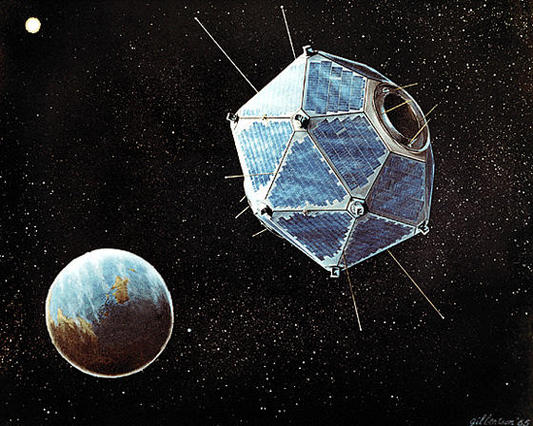 This issue of the journal carries three articles covering different clandestine nuclear activities. The first article revisits a forty-year old mystery dealing with nuclear weapon testing: the possible detection of an undeclared nuclear test in 1979. The second article looks at the black market in plutonium and highly enriched uranium and the amounts that could be available for sale for use in nuclear explosive devices. The final article looks at phosphate rocks as a possible source for clandestine production of uranium, the raw material for making fissile materials.
This issue of the journal carries three articles covering different clandestine nuclear activities. The first article revisits a forty-year old mystery dealing with nuclear weapon testing: the possible detection of an undeclared nuclear test in 1979. The second article looks at the black market in plutonium and highly enriched uranium and the amounts that could be available for sale for use in nuclear explosive devices. The final article looks at phosphate rocks as a possible source for clandestine production of uranium, the raw material for making fissile materials.
In "The 22 September 1979 Vela Incident: The Detected Double-Flash," Christopher M. Wright and Lars-Erik De Geer offer the first part of a major re-examination of the 22 September 1979 detection by U.S. satellite Vela 6911 of a double-flash of light, a signal normally associated with an atmospheric nuclear explosion. (The article is in free access, with supplemental material.) The satellite was part of a constellation developed and deployed to detect atmospheric nuclear tests after the adoption of the 1963 Treaty Banning Nuclear Weapon Tests in the Atmosphere, in Outer Space and Under Water. No state at the time or since has claimed responsibility for having conducted a nuclear test at that time and location.
The Carter Administration initially concluded that the event was a nuclear test, with President Carter noting in his diary in February 1980 that "we have a growing belief among our scientists that the Israelis did indeed conduct a nuclear test explosion in the ocean near the southern end of South Africa." An expert panel set up by the White House Office of Science and Technology Policy and led by Jack Ruina concluded later that while a nuclear explosion could not be ruled out, the satellite signal was probably not a nuclear test but an anomaly caused by sunlight reflected into the sensors from debris produced by a small meteoroid hitting the satellite.
Wright and De Geer look back at this case and assess the alternative explanations for the double-flash seen by the satellite sensors. They use evidence from recently declassified documents made available by the National Security Archive in Washington, DC. They find that, rather than the micrometeroid strike, the double-flash was in fact more consistent with a nuclear explosion once the effects of the aging of the satellite sensors are taken into account. A companion paper to be published in this journal in 2018 reviews hydro-acoustic data and evidence from radioactive iodine-131 found in sheep slaughtered at the time in south-east Australia, which supports the case that the Vela Incident was a nuclear weapon test explosion.
The second article is "Estimating the Amount of Nuclear Weapon-usable Material Outside Government Control Using Data on Reported Seizures" by Valentin Stanev and Steve Fetter. It uses information from the University of Salzburg Database on Nuclear Smuggling, Theft and Orphan Radiation Sources on seizures of plutonium and highly enriched uranium between 1992 and 2015 to build simple statistical models to estimate the amount of material outside government control. By making certain assumptions about the way black markets in these materials work and the likelihood of this material being seized by government authorities, the authors estimate that somewhere between 80 and 250 kilograms of material may be available on the international black market. This estimate should be treated with considerable caution, as some of the assumptions are untested and the black-market mechanisms for this material are not well understood. The authors note, however, that the estimate could be improved if governments provide additional information about seizures of nuclear materials.
The final article in this issue is "Phosphate Rocks and Nuclear Proliferation" by Nils Haneklaus, Anastasiya Bayok, and Vitaly Fedchenko. The raw material for nuclear weapons, whether they are based on plutonium or highly enriched uranium, is natural uranium. Normally this is produced by mining uranium-rich ores, and recovered through chemical processing. Uranium can then be used as reactor fuel and irradiated to make plutonium, or it can be enriched to make highly enriched uranium. While ores with over 300 ppm are typically listed as uranium resources, the high cost of recovery from low-grade ores leads to a preference for using ores with much higher uranium abundances (over 20,000 ppm). The large scale of uranium mining operations means they are not covered by International Atomic Energy Agency safeguards, although states who have adopted the Additional Protocol provide information on the "location, operational status and the estimated annual production capacity of uranium mines."
The article shows that for states seeking to clandestinely develop nuclear weapon capabilities, and not concerned about costs, a possible source of uranium is phosphate rocks, which can have local uranium concentrations of several hundred parts per million. As examples, it cites Iraq in the 1980s, which apparently produced uranium from phosphates, and Israel which continues to do so, while South Korea imported uranium-rich phosphates to extract material for use in undeclared enrichment experiments aimed at exploring a nuclear weapon capability. The authors suggest the need for placing greater emphasis on guidelines that cover production or trade in uranium from unconventional sources.
Image source: NASA and the National Security Archive.
